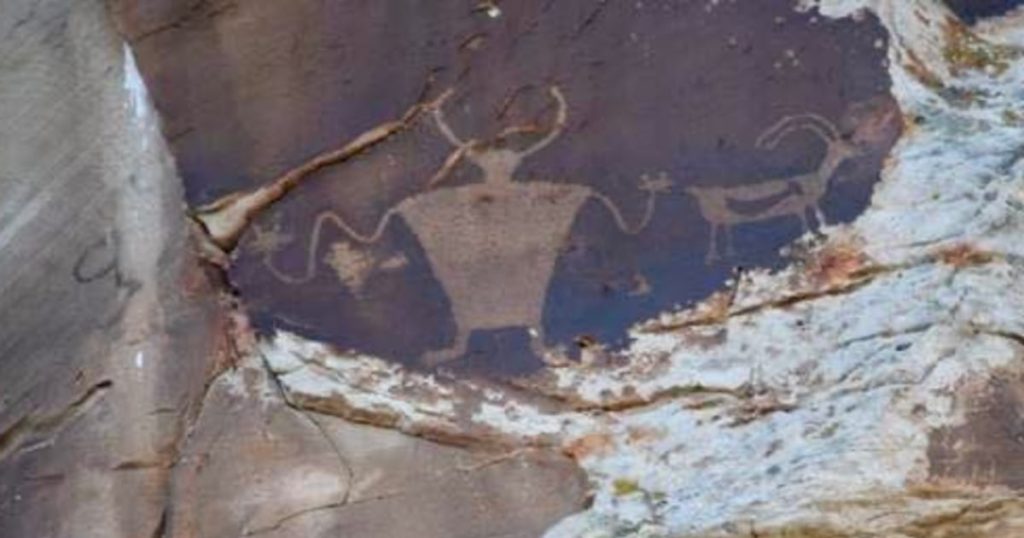Authorities in northeastern Utah are seeking information on anyone involved in installing climbing bolts at the site of an ancient outdoor engraving known as the Pregnant Sheep Petroglyph Panel. The climbing bolts, also known as anchors, were discovered at the federally-owned site near Musket Shot Springs Overlook on November 10. The U.S. Bureau of Land Management and Uintah County Sheriff’s Office have asked the public for help in tracking down those responsible for this act of vandalism. The sheriff’s office characterized the installation as taking place directly on the petroglyph panel, although specific details about the panel were not immediately available.
Some elements associated with similar engravings in Utah have been radiocarbon dated to 1100 A.D. Collaborator Steven Simms of Utah State University noted that petroglyphs in the state represent persistence, reformulation, and integration of art, iconography, and ideology among different peoples. Autumn Gillard, the cultural resource manager for the Paiute Indian Tribe of Utah, expressed the sentiment that installing bolts at the site of a petroglyph is disrespectful to indigenous people because the engravings are considered sacred. She likened vandalism of cultural sites to defacing religious spaces and stressed the significance of these sites to tribal people.
The search for the individuals responsible for installing climbing bolts at the petroglyph site coincides with recent legislation called Protecting America’s Rock Climbing, which clarifies that climbing and the placement of fixed anchors are appropriate within wilderness areas. This legislation was celebrated by the climbing advocacy group Access Fund, which noted that the National Park Service had previously considered prohibiting fixed anchors on federal land. In a separate incident near Wire Pass in Kane County, two individuals were questioned regarding the defacement of a petroglyph, with one woman arrested and potentially facing multiple felony counts related to the incident. The Bureau of Land Management is actively investigating both cases of vandalism.
The installation of climbing bolts at the Pregnant Sheep Petroglyph Panel is concerning to authorities and cultural advocates due to the desecration of sacred sites and disrespect towards indigenous people. Cultural resources such as petroglyphs hold significant historical and spiritual value, and their preservation is crucial for understanding the cultural heritage of the region. Collaborative research efforts have shed light on the age and significance of petroglyphs in Utah, emphasizing the need for respectful treatment of these ancient engravings. The involvement of tribal representatives in discussions about the protection and preservation of cultural sites is essential for maintaining a harmonious relationship with the land and respecting the traditions of Native communities.
Efforts to track down those responsible for the vandalism are ongoing, with authorities seeking information from the public to assist in identifying the individuals involved in installing climbing bolts at the petroglyph site. The impact of these acts of vandalism extends beyond physical damage to the emotional and spiritual well-being of indigenous communities, highlighting the importance of cultural sensitivity and respect for heritage sites. The collaboration between law enforcement agencies, tribal representatives, and advocacy groups is essential for addressing incidents of vandalism and ensuring the protection of sacred sites for future generations. By raising awareness about the significance of petroglyphs and other cultural resources, efforts can be made to prevent further acts of desecration and promote a greater understanding and appreciation of the rich cultural tapestry of Utah and its ancestral lands.


